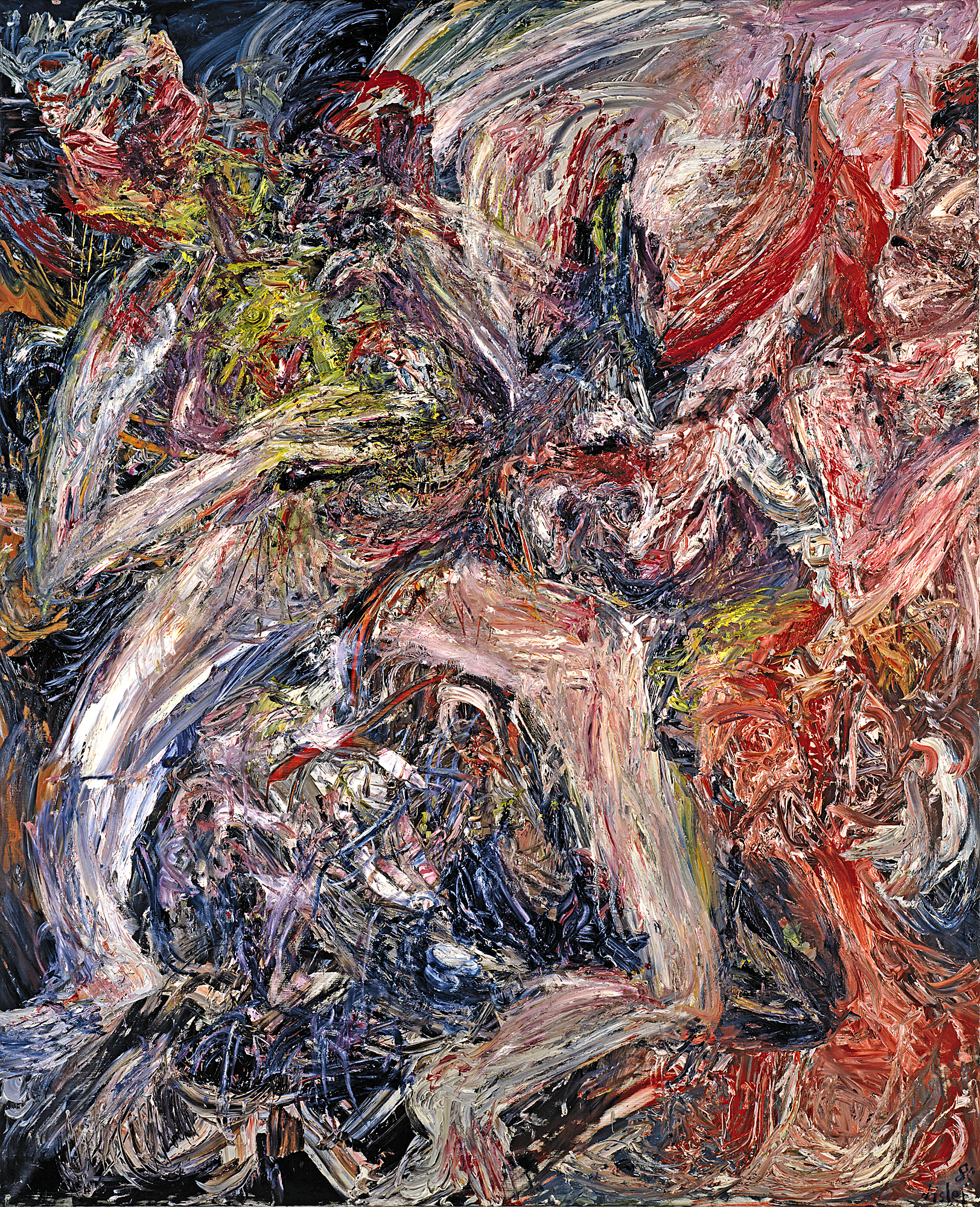After having opened his first studio in Solothurn in 1969, Martin Disler left to study in Paris in 1973, and then went onto Bologna. A painter, sculptor and engraver, Disler was often described as a self-taught artist. Although he participated in the great comeback of painting and figuration which occurred in the 1980s, he maintained a position on the sidelines.
Invasion durch eine falsche Sprache, his personal exhibition at the Kunsthalle Basel in 1980, marked the beginning of his international career. The same year, he was invited by Harald Szeemann to the Venice Biennial (Aperto 80), then exhibited at Documenta 7 in Kassel. During a career that was as tortuous as it was dazzling, living in and working between Switzerland, Italy and New York, Disler never stopped deploying his art from one city to another, from one technique to another.
France and Germany discovered him in 1985, respectively at the Museum Folkwang in Essen and at the Musée d’Art Moderne de la Ville de Paris. The following year, he exhibited at the Museu de Arte Moderna in São Paulo, and then at the Mumok in Vienna in 1987. In Geneva, the Cabinet des Estampes presented his engraved works in 1989, two years after the Kunsthaus Zürich had awarded him the prize of Best Swiss Artist.
Martin Disler died of a stroke suddenly at the age of forty-seven. He left behind him a series of three hundred and eighty-eight water-colours which he had painted during the summer before his death and which were revealed during a travelling exhibition organised by his friend, the curator Dieter Koepplin. In 2001, the Musée des Beaux-Arts de La Chaux-de-Fonds devoted an exhibition to his sculptural works, while in 2007, ten years after the artist’s death, the Aargauer Kunsthaus paid tribute to him with the retrospective Martin Disler, De l’amour et d’autres démons.
Invasion durch eine falsche Sprache, his personal exhibition at the Kunsthalle Basel in 1980, marked the beginning of his international career. The same year, he was invited by Harald Szeemann to the Venice Biennial (Aperto 80), then exhibited at Documenta 7 in Kassel. During a career that was as tortuous as it was dazzling, living in and working between Switzerland, Italy and New York, Disler never stopped deploying his art from one city to another, from one technique to another.
France and Germany discovered him in 1985, respectively at the Museum Folkwang in Essen and at the Musée d’Art Moderne de la Ville de Paris. The following year, he exhibited at the Museu de Arte Moderna in São Paulo, and then at the Mumok in Vienna in 1987. In Geneva, the Cabinet des Estampes presented his engraved works in 1989, two years after the Kunsthaus Zürich had awarded him the prize of Best Swiss Artist.
Martin Disler died of a stroke suddenly at the age of forty-seven. He left behind him a series of three hundred and eighty-eight water-colours which he had painted during the summer before his death and which were revealed during a travelling exhibition organised by his friend, the curator Dieter Koepplin. In 2001, the Musée des Beaux-Arts de La Chaux-de-Fonds devoted an exhibition to his sculptural works, while in 2007, ten years after the artist’s death, the Aargauer Kunsthaus paid tribute to him with the retrospective Martin Disler, De l’amour et d’autres démons.
